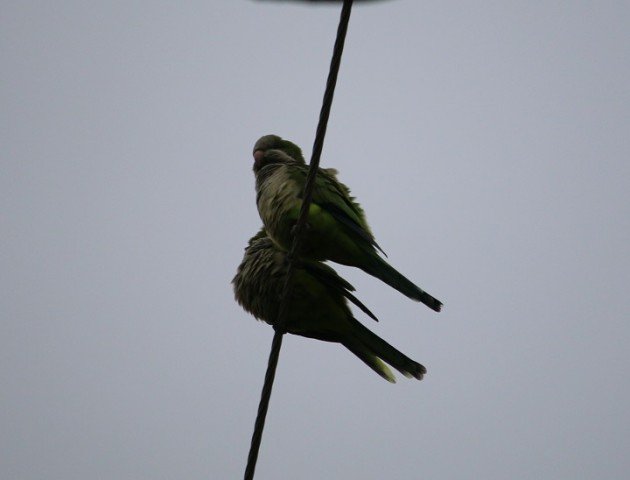
Though I have been birding for a few years now, I had only birded west of the Mississippi once before my recent trip to Austin, Texas. Given how far west I found myself, I was hoping for at least a handful of new birds. I didn’t realize how many new species I would see within the city itself!
Austin is growing rapidly, someone on the plane telling me the city added over a hundred people every day. Because of this, the city is in flux, with city streets adding new buildings and restaurants all the time. Because of this, areas around the city that were once sleepy are now “urban,” with humans and wildlife struggling to keep up. I saw this first-hand during an afternoon studio walk.
As part of the walk, artists opened their studios and galleries to visitors, announcing their presence with big numbered signs. As we walked, I noticed two unique birds on the power lines.
Inca Dove
The first looked very similar to a Mourning Dove, which of course can be found across the United States. However, looking closer I noticed a white border between its wing and its body, the tell-tale field mark of a White-winged Dove! These birds live in Texas and the southwest, and until that power line I had never seen one.
Next to it was an even stranger sight. A Guineaufowl, all 28 inches of it, was also sitting on the line, dwarfing all birds around it. We had seen a chicken or two so far on our walk, but it was hilarious to see this much larger domestic bird sitting between doves and starlings. Like I said, Austin is changing, but in this neighborhood it is clearly still okay to leave your farm birds out and about!
Monk Parakeet
We continued walking, but now my gaze carefully followed the power cables as we strode underneath. I wasn’t disappointed: only a few blocks away I noticed a few more unique silhouettes mixed in with the other pigeons. Though the cloudy day made their colors difficult to see from below, when I took a photo and zoomed in I found a Monk Parakeet looking back at me from my camera screen!
I have always wanted to see a Monk Parakeet. Comical with their green feathers and unique faces, they have established feral populations in cities across the country since their accidental release in the 1960’s. It’s a strange experience looking up from a city street to gaze at birds native to South America; even more ironic considering humans drove the only native parrot/parakeet species, the Carolina Parakeet, to extinction.
Austin had one more life bird in store for me. Tucked into the leaves of a small tree, two Inca Doves peered out from the canopy at us as we walked by. They blended in well, and it was only luck that I happened to notice one shifting about, its scale-like feathers making identification simple. Again, they are fairly common in the Southwest and Mexico, but for me they felt brand new!
Most people probably don’t think much of city birding, and it’s true that the birds I saw are typical in and near Austin. Still, I love seeing species that are “common” elsewhere and new for me, and I marvel at their fortitude in making this new kind of environment their own. After all, part of getting to know any city is learning its non-human inhabitants!













Interesting that you saw Monk Parakeets in Austin! I knew they have been settling into New York. Last year I went to Spain and was shocked at how they had taken over the parks in Madrid, where they built huge nests and were incredibly noisy. Then in Barcelona it seemed like they were everywhere, even in tiny plazas with a few palm trees. I saw a flock of over a hundred. The Natural History Museum placed tags on some and is studying them.